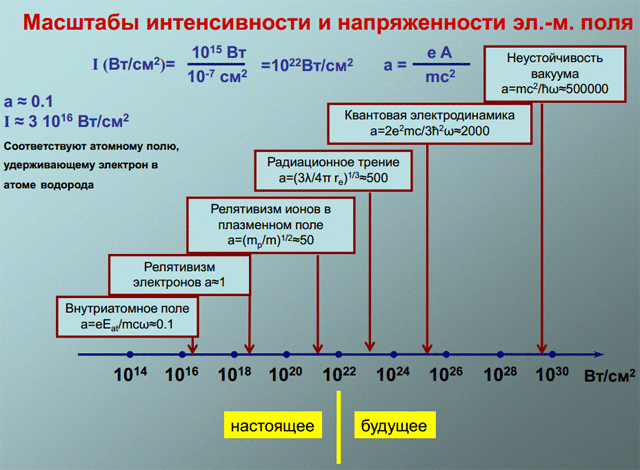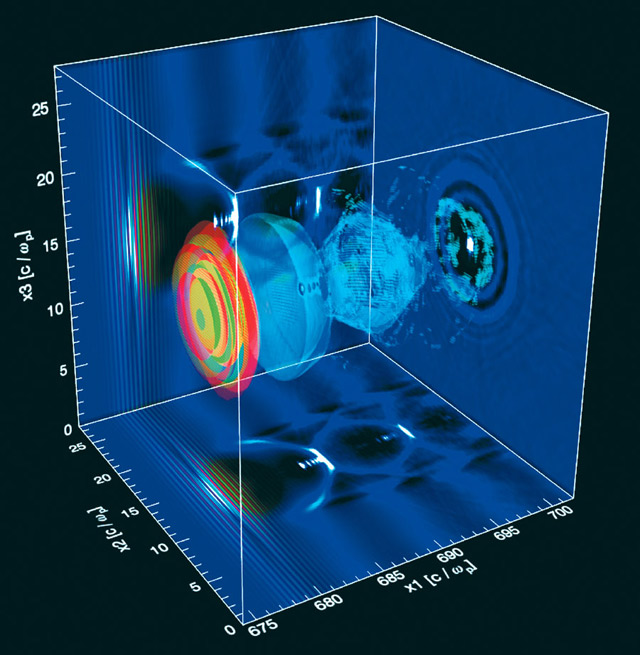Romania launches construction of world's most powerful laser

On June 14, 2013, in the city of Magurele near Bucharest , the construction of the Extreme Light Infrastructure - Nuclear Physics (ELI-NP) research center began , which is due to be commissioned in 2017. This is one of the three centers of the European infrastructure megaproject ELI (Extreme Light Infrastructure) , in which laser systems will be built at the highest achievable power level.
Other parts of the project ELI-Beamlines and ELI-Attosecond will be built, respectively, in the Czech Republic and Hungary.
The main scientific tool in the Romanian ELI-NP center will be a laser installation of two Apollon-type lasers of 10 petawatts each, on titanium-sapphire crystals. Through the use of the method of amplification of chirped pulses (CPA, Chirped pulse amplifi cation), the setup should show a laser pulse intensity of up to 10 24 W / cm 2 and an electric field of up to 10 15 V / m. The laser beam is focused into a spot with a diameter of several wavelengths. Ultra-high peak power is achieved due to the concentration of relatively low energy (several kilojoules) in ultrashort time intervals (about 15 femtoseconds).
The magnitude of the intensity and intensity of the electromagnetic field
From the presentation “Extreme Light Fields” , Alexander Mikhailovich Sergeev, Institute of Applied Physics RAS, Nizhny Novgorod

From the presentation “Extreme Light Fields” , Alexander Mikhailovich Sergeev, Institute of Applied Physics RAS, Nizhny Novgorod
Work in ultrashort time intervals opens up fundamentally new opportunities for science. For example, high-brightness X-ray beams at such time intervals will make it possible to obtain four-dimensional images with subatomic resolution, i.e. record dynamic changes in the microscopic structure of matter with a picometric resolution in space and attosecond resolution in time ( source ).

The Romanian facility will be used in experiments in nuclear physics, since it is able to work as a source of hard photons and charged high-energy particles with previously unattainable characteristics. As part of the ELI infrastructure, experiments will be organized in new fields of science - relativistic optics and relativistic microelectronics. Lasers will help investigate the fundamental effects of nonlinear quantum electrodynamics and general relativity.
For more information about experiments in the field of nuclear physics at the ELI-NP installation, see the brochure prepared by the ELI-NP working group, as well as the presentation by A.M. Sergeev, starting on page 38.
The cost of the research center ELI-NP is 356.2 million euros, of which 83% is funded by the European Union, and 17% is Romania. In general, the ELI project brings together more than 40 research teams from 13 countries of the European Union and Russia.
